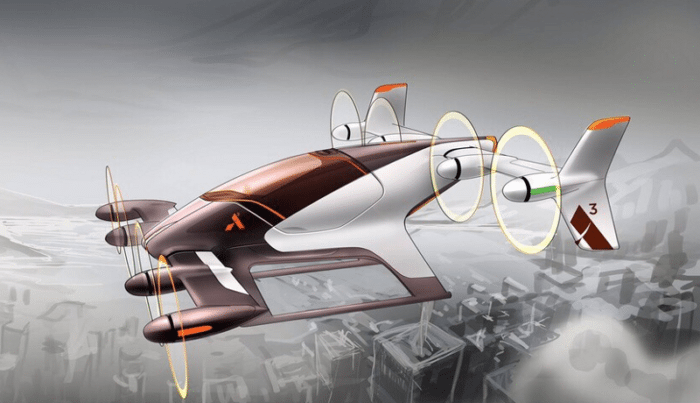
Airbus Vahana concept. Graphic courtesy of Airbus
Airbus A³, the advanced projects branch of Airbus Group based in Silicon Valley, will need improvements in computer processing capabilities to make its Vahana autonomous air taxi a reality by 2020. Arne Stoschek, head of autonomous systems for Airbus A³, gave an audience at the 2017 Nvidia GPU Technology Conference (GTC) updates on computing technologies and flight operational challenges the company would face in making Vahana a reality.
The Silicon Valley division of Airbus, first launched in 2015, describes its goal with Vahana as developing the aviation industry’s first certified electric, autonomous vertical takeoff and landing, passenger-carrying aircraft. Vahana is projected to have speeds up to four times faster “than cars or traffic and have a flight range of about 50 miles,” according to the Vahana project website.
According to a report published by ZDNet on a presentation given by Stoschek at Nvidia GTC, the Vahana central processing unit performance, memory, power usage and software capabilities will need to be capable of producing high definition images from traditional aerial surveillance systems such as aircraft radar and light detection and ranging to produce a accurate positioning information and imaging for the aircraft.
“If we have an obstacle 500 meters away … that’s 10 seconds to impact. If we have something that is [approaching] with our own speed, closing speed of 100 meters per second, then we have five seconds to impact, which is not a lot of time,” Stoschek told Nvidia GTC attendees.
During his presentation, Stoschek also reaffirmed a September 2016 statement from Rodin Lyasoff, CEO of A³. In the statement, he noted that the company is aiming for a full-size prototype before the end of 2017 and to have a product demonstrator ready by 2020.
Stoschek’s presentation comes a week after the Vahana team announced a contract with Portland, Oregon-based FlightHouse Engineering to design and manufacture the composite airframes for the Vahana demonstration vehicles. The project is currently on track to perform a full-scale test flight by the end of 2017.
Lyasoff was also recently quoted by Airbus Magazine, an internal company publication produced by Airbus Group, as stating that “many of the technologies needed, such as batteries, motors and avionics are most of the way there.” However, he noted that Vahana will require the use of sense-and-avoid technology, which he describes as “one of the bigger challenges” that the team needs to resolve.
The A³ also recently met with FAA officials during a workshop hosted by the Assn. for Unmanned Vehicle Systems International to discuss two key regulatory challenges, including certification and air traffic management. Currently there is no clear certification path for autonomous passenger aircraft, and current air traffic regulations do not allow for the type of beyond-line-of-sight operations over populated areas that A³ wants to establish with Vahana.
Vahana is one of three advanced technology projects that the Airbus Silicon Valley division is working on. The other two include Voom, an on-demand helicopter platform, and Transpoose, which is described as a “a clean-sheet rethinking of cabin design and architecture for large commercial aircraft.”